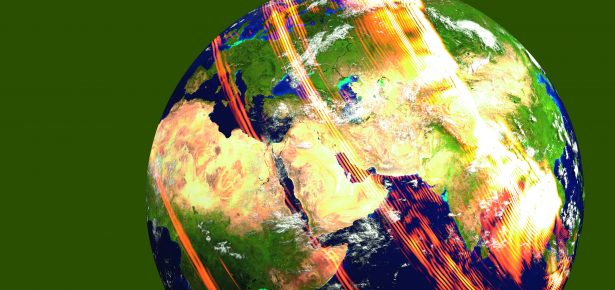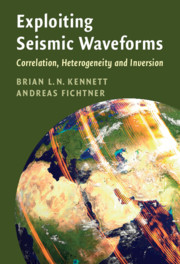
Brian Kennett and Andreas Fichtner met when Brian was visiting the University of Munich from Australia on a Humboldt Research Award. They have since collaborated on a number of papers, mostly involving some aspect of seismic waveform inversion for the determination of structure.
In the nearly twenty years since the publication of Brian’s two volume work The Seismic Wavefield (CUP) a number of new developments have emerged: notably the use of correlation techniques, particularly for the exploitation of seismic noise and the practical application of waveform inversion. Further, improvements in computational power have enabled the simulation of seismic wave propagation to higher frequencies and with more realistic models of heterogeneity in three dimensions.
Exploiting Seismic Waveforms takes up these themes, all of which deal directly with the waveforms of ground motion rather than extracted properties such as the times of passage of seismic waves. Both Brian and Andreas had been working on aspects of the correlation of seismic waves from both earthquakes and ambient noise and the two strands of investigation meshed to produce a new treatment of the correlation process and its outcomes. This viewpoint helps with the extraction of information on both structure and sources, and in the use of the coda of large earthquakes that contain information about the properties of the Earth’s deep interior.
Andreas and his group at ETH Zurich have made significant advances in the development of waveform inversion techniques that use as much as possible of the seismogram. By working from low frequencies towards higher frequencies as the inversion progresses direct correspondence can be maintained between simulations and observations and thus achieve a good rendering of the underlying structure. It is now feasible to invert the correlation wavefield for both sources and structure and this opens up new avenues for the future.
The higher frequency aspects of seismograms are frequently neglected because they are difficult to interpret, but they contain information on seismic structure on scales that are smaller than can be readily imaged. With the aid of modelling and waveform correlation it is possible to tease out the general properties of finer scales of heterogeneity. Such smaller-scale features are superimposed on the broader scales that can be extracted from seismic tomography. As seismic waves propagate, they interact with the multiple scales of heterogeneity to produce tangled effects on seismograms.
Exploiting Seismic Waveforms covers aspects of seismology on a wide range of spatial and frequency scales from reflection seismology to the free oscillations of the Earth, reflecting the broad interests of the authors and their involvement in the development of new techniques and algorithms. Brian and Andreas have worked together to produce a unified treatment through the work, with consistent notation, suitable both for graduate students wishing to explore these newer topics and for experienced researchers.

Latest Comments
Have your say!